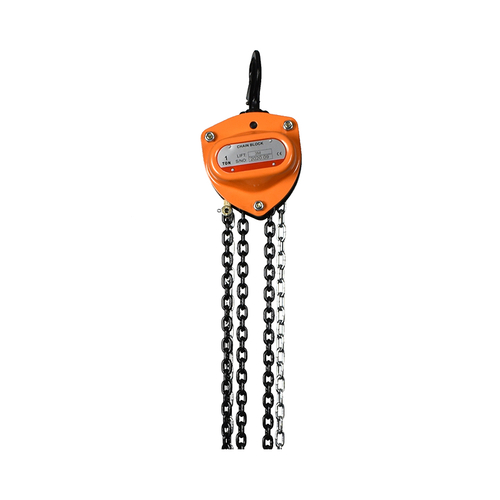Content
- 1 1. What Weight Capacity Should a Heavy-Duty Mechanical Jack Have?
- 2 2. Which Material Ensures the Durability of a Mechanical Jack?
- 3 3. What Structural Design Improves the Stability of a Mechanical Jack?
- 4 4. How to Evaluate the Ease of Use and Maintenance of a Mechanical Jack?
- 5 5. What Safety Certifications Should a Qualified Mechanical Jack Have?
In industrial operations, construction sites, and heavy vehicle maintenance, mechanical jacks play a crucial role in heavy-duty lifting tasks. A durable mechanical jack not only ensures work efficiency but also guarantees operational safety. However, with various types and specifications of mechanical jacks on the market, how can one make the right choice? This article will answer key questions throughout the selection process to help you find a reliable heavy-duty mechanical jack.
1. What Weight Capacity Should a Heavy-Duty Mechanical Jack Have?
The core function of a mechanical jack is to bear and lift heavy loads, so weight capacity is the first factor to consider. First, you need to clarify the maximum weight of the objects you will lift—for example, if you often lift large construction machinery or heavy trucks, the jack’s capacity must exceed the actual weight of these objects. Generally, it is recommended to choose a jack with a weight capacity 20%-30% higher than the maximum load it will bear. This not only prevents overloading (which can cause jack deformation or failure) but also leaves a safety buffer for unexpected weight fluctuations during lifting.
Additionally, pay attention to the "rated load" marked on the jack—this is the maximum weight the product can safely handle after passing industry tests. Avoid choosing jacks with vague or unmarked load ratings, as they may not meet safety standards and pose risks during use.
2. Which Material Ensures the Durability of a Mechanical Jack?
The material of a mechanical jack directly determines its durability and load-bearing capacity. For heavy-duty scenarios, the jack’s main components (such as the base, lifting arm, and screw rod) should be made of high-strength materials.
- Base and Lifting Arm: High-quality carbon steel or alloy steel is preferred. These materials have excellent tensile strength and impact resistance, which can withstand long-term heavy loads without bending or cracking. You can check the material thickness—thicker steel components usually have better load-bearing performance, but also need to balance weight (excessively heavy jacks may be inconvenient to move).
- Screw Rod: It should be made of wear-resistant steel and undergo surface treatment (such as galvanizing or quenching). This can reduce friction during use, prevent rust, and extend the service life of the jack.
Avoid jacks made of low-quality cast iron or thin steel plates—these materials are prone to brittle fracture under heavy loads, leading to safety accidents.
3. What Structural Design Improves the Stability of a Mechanical Jack?
Stability is another key factor in choosing a heavy-duty mechanical jack, especially when lifting large and irregular objects. Here are several structural design points to focus on:
- Base Design: A wide and flat base can increase the contact area with the ground, reducing the risk of the jack tipping over. Some jacks also have anti-slip pads on the bottom—these pads enhance friction with the ground, further improving stability on smooth surfaces.
- Lifting Mechanism: The lifting arm or platform should have a stable locking structure. For example, a ratchet locking mechanism can fix the lifting height in time, preventing the jack from descending unexpectedly due to load changes. Additionally, the connection points between the lifting arm and the base should be reinforced (such as using thickened bolts or welding), avoiding loosening during use.
- Height Adjustment Range: Choose a jack with a height range that matches your needs. If you need to lift objects to a higher position, ensure the jack’s maximum lifting height meets the requirement; at the same time, the minimum height should be low enough to fit under the bottom of the object (such as the chassis of a heavy truck).
4. How to Evaluate the Ease of Use and Maintenance of a Mechanical Jack?
A durable mechanical jack should not only be strong but also easy to operate and maintain—this can improve work efficiency and reduce the cost of long-term use.
- Ease of Operation: Check whether the jack’s handle is comfortable to hold and whether the force required for lifting is reasonable. Some jacks are equipped with extended handles or rotating handles, which can save effort during operation. Additionally, the lifting and lowering speed should be moderate—too fast may cause instability, while too slow will affect work efficiency.
- Maintenance Requirements: Ask about the maintenance needs of the jack. For example, does the screw rod need regular lubrication? Is the structure easy to disassemble and clean? A jack with simple maintenance requirements (such as easy access to lubrication points or detachable dust covers) will be more convenient to maintain, reducing the risk of component wear due to neglect of maintenance.
It is also recommended to choose jacks with clear maintenance instructions—this can help operators correctly maintain the jack and extend its service life.
5. What Safety Certifications Should a Qualified Mechanical Jack Have?
Safety certifications are an important guarantee that a mechanical jack meets industry standards. Before purchasing, check whether the jack has passed relevant international or regional safety certifications. For example, in Europe, the CE certification indicates that the product meets the safety, health, and environmental protection requirements of the European Union; in North America, the ANSI/ASME certification ensures that the jack complies with the safety standards for lifting equipment.
These certifications mean the jack has undergone strict tests (such as load-bearing tests, fatigue tests, and safety lock tests), proving its reliability in heavy-duty scenarios. Avoid purchasing jacks without any safety certifications—they may not have undergone formal quality inspections and have hidden safety hazards.
Choosing a durable mechanical jack for heavy-duty lifting requires comprehensive consideration of weight capacity, material, structural design, ease of use, and safety certifications. By answering the above questions, you can screen out jacks that meet your actual needs and avoid the risks of low efficiency or safety accidents caused by improper selection. Remember, a high-quality mechanical jack is not only a tool but also a key guarantee for the safety and smooth progress of heavy-duty work.



 English
English Español
Español






